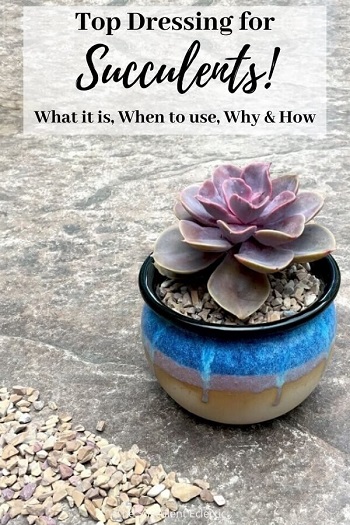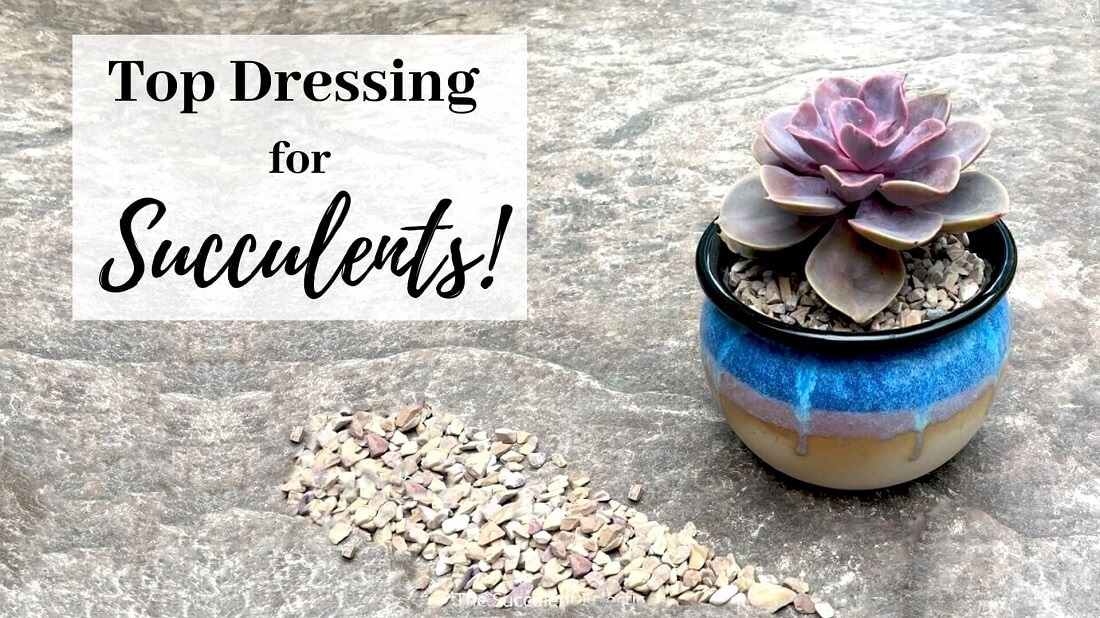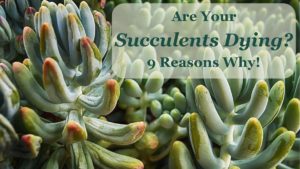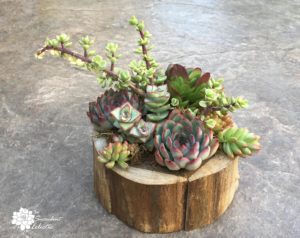Have you ever wondered why so many succulent arrangements have a layer of decorative pebbles on top? Have you heard people talking about top dressing for succulents and wondered what it is or what it’s used for? Adding a layer of pebbles on top of succulent soil is more than just fashion — the pebbles serve several purposes. Read on to learn all about succulent pebbles and why you should use them!
Why Use Succulent Pebbles
In this Post We'll Cover:
{Please note, some links in this post may be affiliate links to sites that pay me a small commission if you click on the link and make a purchase. This commission is at absolutely no cost to you. I only recommend products and companies that I have worked with and truly love! ~Kat}
What Is Succulent Top Dressing?
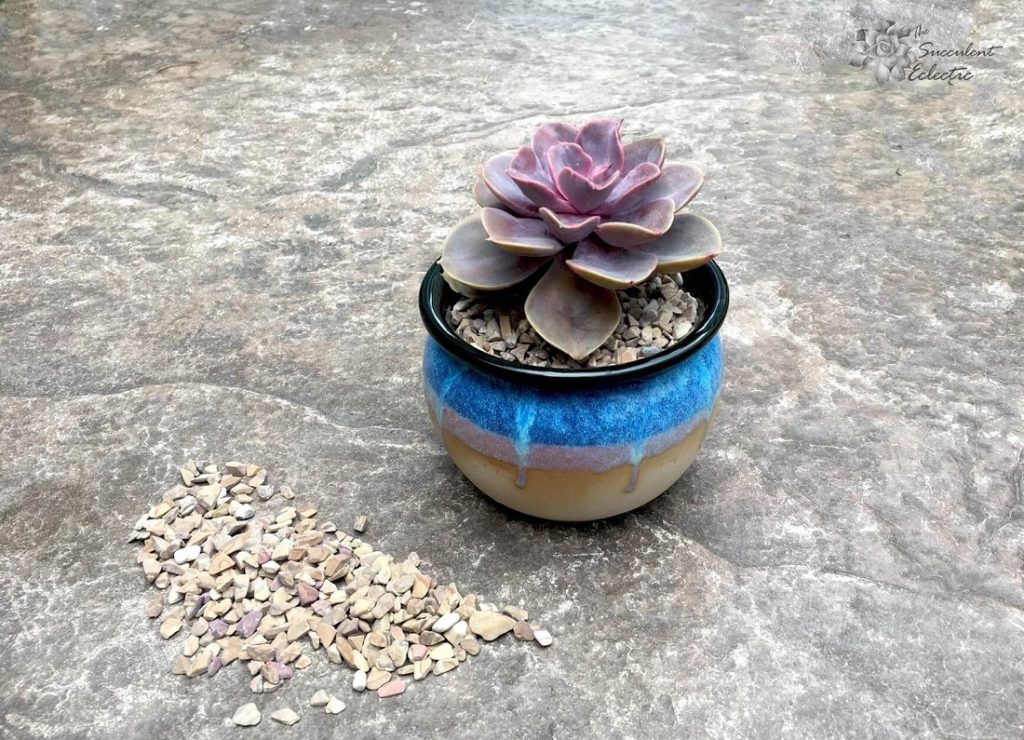
Top dressing is used throughout gardening and agriculture. Generally, a top dressing is a fine, even layer of rich soil, compost, manure, or worm castings applied on top of the soil of a garden bed, lawn, or field just before planting. It is then tilled into the soil, ready to receive the seeds or plants. A top dressing for succulents is a layer of inorganic matter like pebbles, gravel, crushed rock, or crushed seashells applied in an even layer over the top of the soil after the plants are in place. A succulent top dressing completely covers the soil to a depth of about a 1/3 inch and is left in place. This provides many benefits for plants in containers or growing in the ground.
Benefits of Top Dressing for Succulents
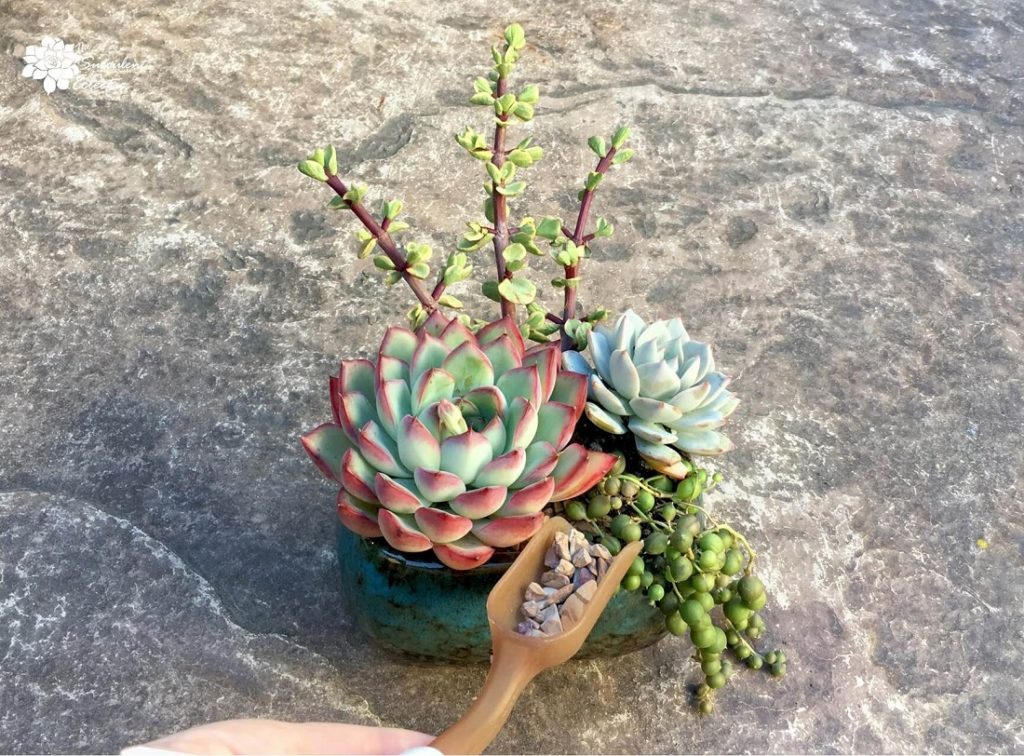
Inorganic top dressing for succulents has several benefits:
- Succulent top dressing helps to regulate the temperature of the soil, insulating the roots from wide temperature fluctuations.
- Dark pebbles or gravel absorb more heat, warming the soil and stimulating root development, while light colors reflect the heat — useful in hot climates.
- Succulent pebbles break up the heavy force of water, either from rain or watering, preventing soil erosion. This keeps soil from splashing up onto the leaves of your plants.
- At a thickness of at least 1/3 of an inch, an inorganic top dressing prevents insects from laying their eggs in the damp, organic soil. It also smothers any eggs already laid on the soil. This is the most reliable way to rid your home of pesky fungus gnats.
- Top dressings act as a weed barrier.
- It adds weight to plastic pots and containers to keep them from blowing away.
- Top dressing for succulents can help to keep newly planted plants upright until they fully root into the surrounding soil matrix.
And let’s face it — a layer of decorative pebbles looks more attractive than exposed soil. With all this value, is it any wonder I include adding succulent pebbles as a step in my guide to how to plant succulents?
Top Dressing for Succulents
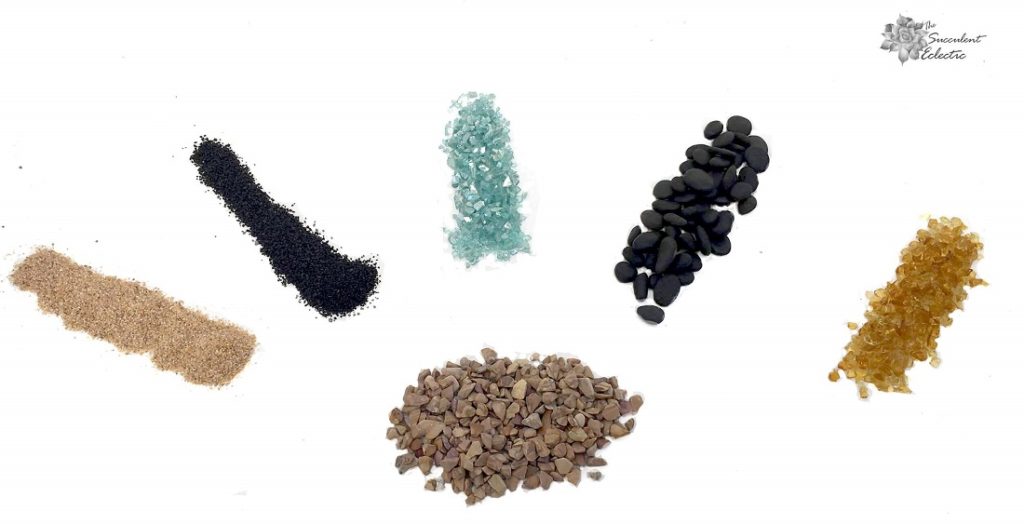
Top dressings for succulents come in a wide array of colors, textures, and sizes. We usually think in terms of decorative pebbles, but you can use sand, pebbles, gravel, crushed granite, pumice, fire glass, seashells, crushed coral, small stones, and even semi-precious gemstone chips like amethyst, tiger eye, quartz, and more.
Take a little care with your choice of top dressings. If you use sand, ensure it is clean or washed. Sand straight from the beach will have a high salt content that will damage your plants. And be sure the “colored rocks” you use are colorfast and are not just powder-coated. Some landscape rocks sold at home stores are coated with a color that comes off, staining the plants and making a mess. Use any labeled as “top dressing,” though you’ll also find great succulent pebbles in aquarium shops. And fire glass for decorative fire features makes such a glamorous addition. Check out the collection of succulent top dressings in my Amazon store for ideas! Each is safe to use for your succulent plants.
Succulent top dressings and pebbles run the gamut from dull to shiny, subdued earth tones to neon-bright shades of green, blue, yellow, purple, and more. So — which should you use? The best answer is the one that looks good to you. Seriously. I will show you and describe what I consider when I choose top dressings, but who’s to say you’ll like my taste? I like a natural look that enhances the plant and pulls the colors and textures of the succulent and its container together. But if you love the look of DayGlo pink pebbles with a silvery-green succulent, rock on!
Choosing Top Dressing for Succulents
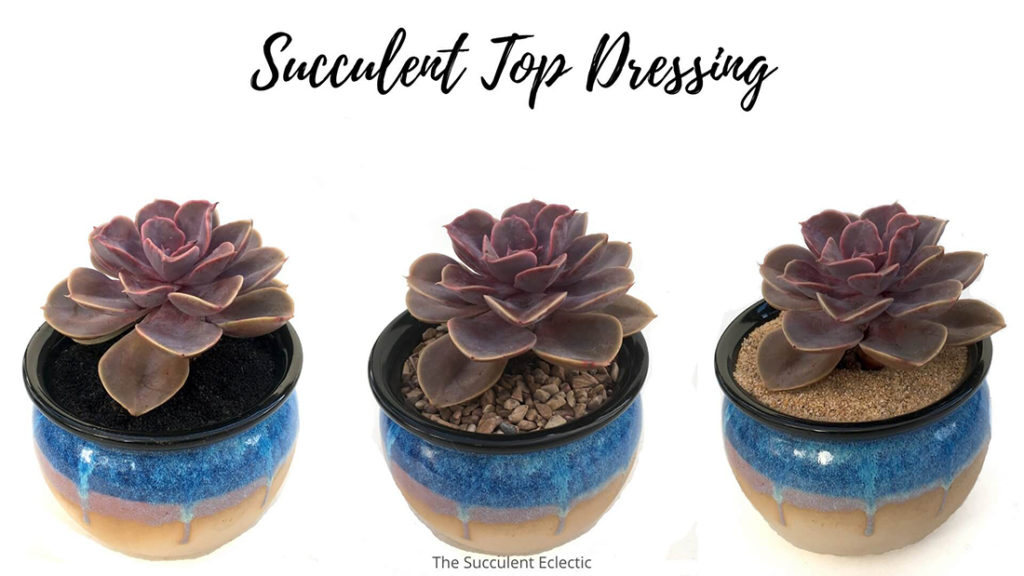
I think of succulent top dressing like jewelry. It should enhance the look and add interest, but not dominate it. Perhaps Debra Lee Baldwin says it best. She likens decorative pebbles for succulents to the mat for a painting. She considers the succulents as the artwork, the container as the frame, and the top dressing as the mat.
Above, I took a ceramic succulent pot planted with an Echeveria Perle von Nurnberg and photographed it with three different top dressings to show you the difference it makes. Because the pot has a black, glossy rim, I chose black sand with a bit of sparkle to it. The pot also has a glossy tan color lower down. I chose tan pebbles with a matte finish and a caramel-colored sand. Isn’t the difference each makes remarkable? Imagine the Echeveria PVN with a plum-toned top dressing or a brilliant lapis blue like the pot.
As you consider your choice of top dressing, always keep in mind the effect you want to achieve. If the pot is super cool and you want to highlight that, your choice of pebbles, sand, or rocks may be different than if you want to enhance the plant.
A Matter of Scale
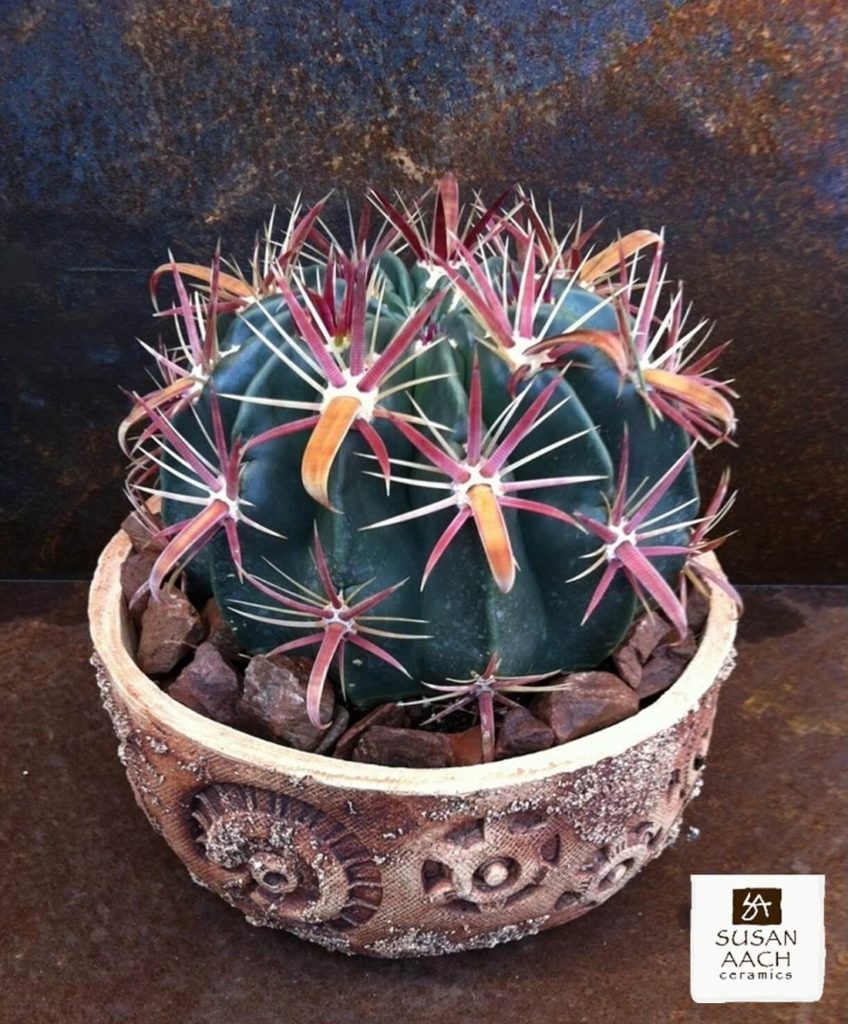
When people discuss top dressing for succulents, they almost always mean pea gravel or decorative pebbles of approximately 1/5 – 1/4 -inch. That is the size of the tan pebbles I used, shown in the center of the trio above, with the Echeveria PVN. I really like the look of the sand, though, don’t you? It is more difficult to reuse for other plantings than the pebbles, but for a single planting, I think it looks great.
Most people would not consider using such a chunky top dressing as this, but I think it looks magnificent! This is a handmade ceramic pot by Susan Aach. She planted it with a Ferocactus and used a rough-textured, chunky top dressing that really pulls the two together. I love this look!
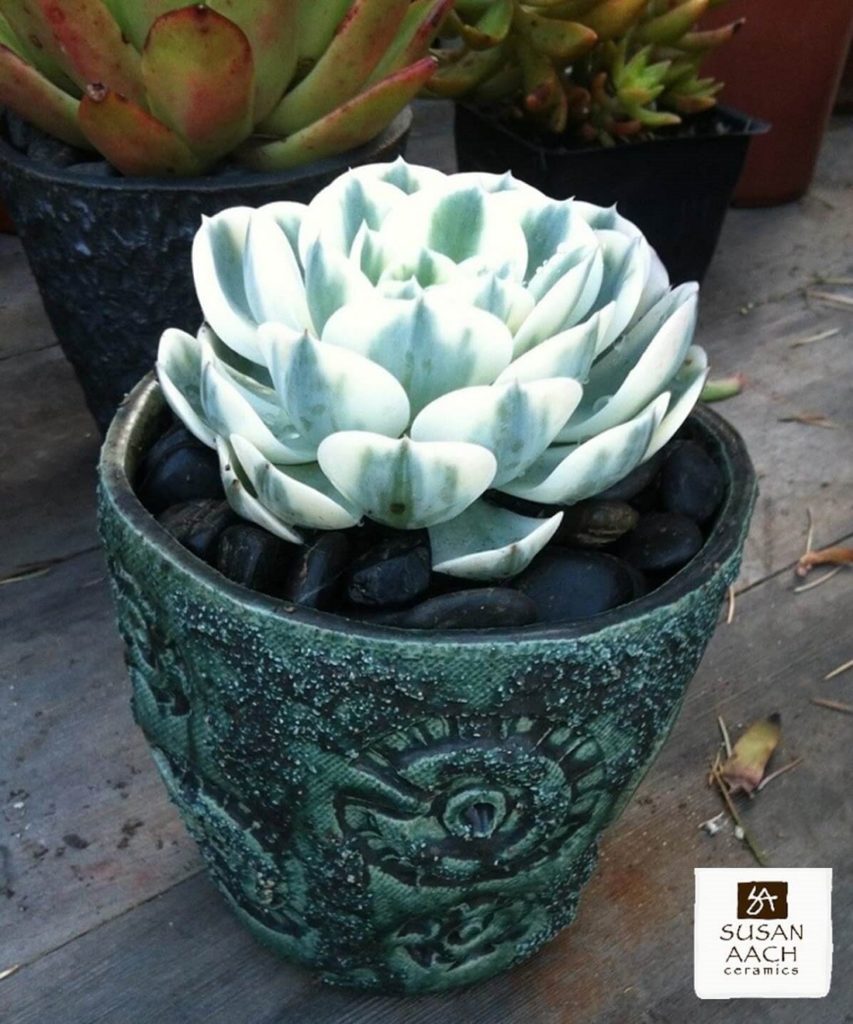
This is another combo pairing a Susan Aach pot and a chunky-sized top dressing. Together, they enhance this gorgeous, variegated Echeveria Compton Carousel to perfection. She really brings her artist’s eye to pairing her pots, plants, and top dressings. She balances the beauty of the plants and the pots to achieve a genuine synergy. Learn more about Susan Aach handmade pottery on her site, and check out my visit with her. Thanks, Susan, for the use of your beautiful images!
Are There Problems Using Top Dressing for Succulents?
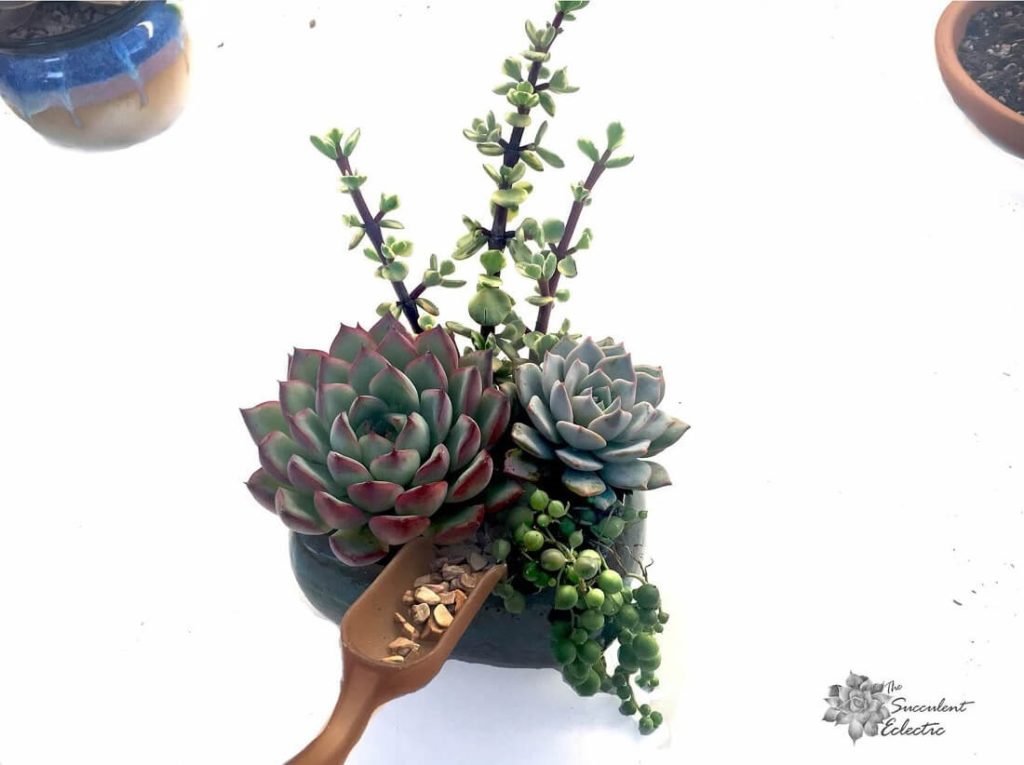
If adding succulent pebbles to your planters is a new idea, there are a few questions you may have:
Do succulent pebbles make the soil retain moisture? As regular readers know, choosing a fast-draining succulent soil is an absolute must for the health of your succulents. This is non-negotiable. So what about adding the top dressing? It’s true that pebbles cut down on the soil losing water to the air through evaporation. But you want the water to travel down through the soil, past the plant’s roots, where it can be absorbed. The small amount of evaporation lost is more than compensated for by the value of the top dressing and a good soil.
Does the top dressing impair air circulation for the soil and roots? Succulent roots need oxygen for the plant to live. Small pockets of air in the gritty soil hold air, allowing the roots to access oxygen. A top dressing of gravel, pebbles, or even sand does not prevent the air from reaching the soil and benefiting the plant’s roots. Too much water with insufficient drainage saturates the soil, driving out air pockets and “drowning” the plant. Succulent top dressing in no way impairs your plant’s access to oxygen.
How to tell when your succulents need water if you can’t touch the soil? Many succulent growers determine when to water their plants based on when the soil feels dry. I certainly prefer this method over following a set schedule. Even better is to water when your succulents indicate they need water, and not before. If you truly need to judge the water content of your soil, a chopstick is my preferred “moisture meter.” Insert the chopstick into the soil. If it comes out feeling or looking wet or with soil particles sticking to it, do not water. When it comes out clean and dry — it’s time to water! Another method is to weigh the finished pit in your hands. You’ll notice the change in weight as the plant uses the water and the soil dries.
Where to Buy Pebbles for Succulents?
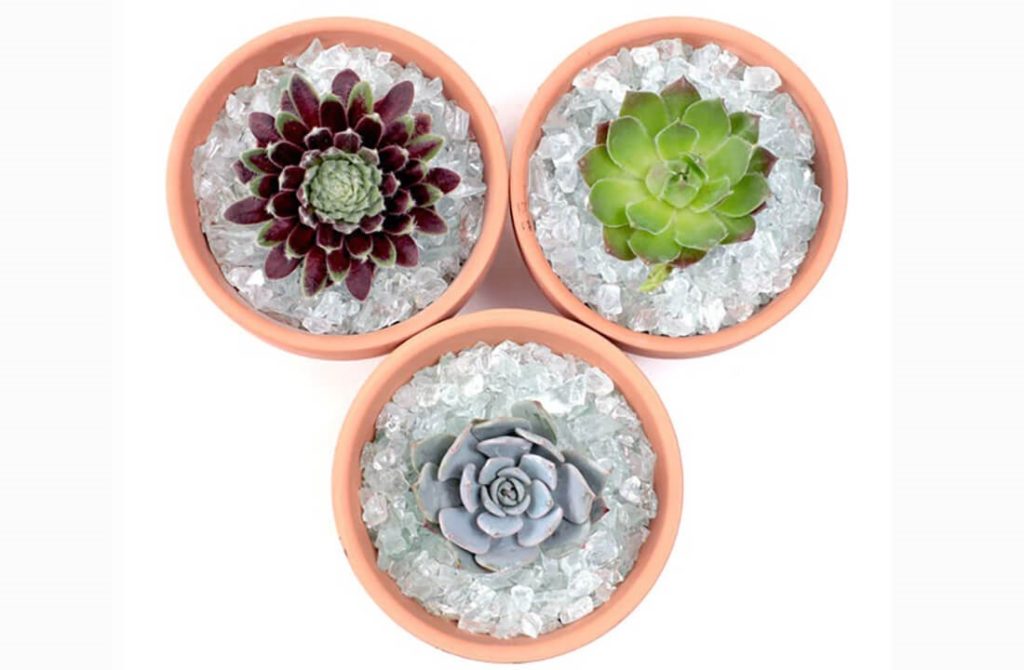
Now that you understand why and how to use succulent pebbles — you need to know where to buy them, right? I have a few good resources to recommend. First, my Amazon store has a section devoted to top dressing for succulents. I’ve included a range of colors, styles, and sizes from sand to gravel. Mountain Crest Gardens also has an excellent selection of sand and pebbles for succulents. Consider home stores, with the caveats above in mind, as well as pet stores and aquarium supply shops. Get creative with your choices!
Succulent Top Dressing Frequently Asked Questions (FAQs)
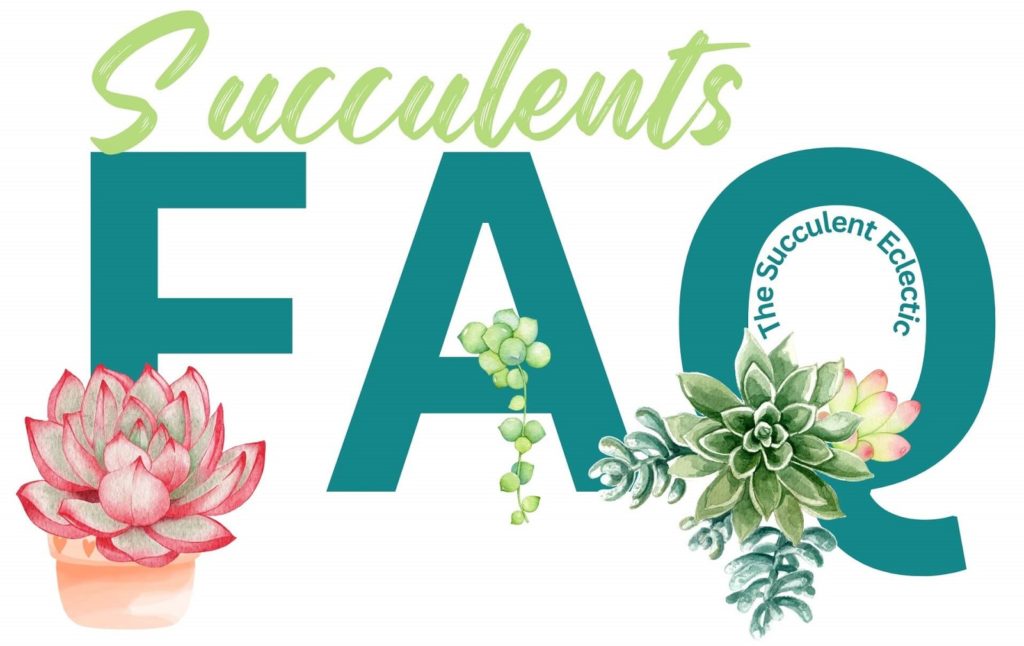
What do you top dress succulents with?
The most commonly used succulent top dressing is pea gravel or pebbles measuring about 1/5″ to 1/4″, but there are many other options to consider. You can use a much chunkier top dressing or something as fine as sand (but don’t use beach sand due to the salt content). You can also use crushed granite, sea shells, or coral. All work well.
What are the benefits of top dressing succulents?
Succulent top dressings offer several benefits:
• Acts as a weed barrier
• Prevents from laying eggs in the plant’s soil
• Smothers any eggs already laid in the soil
• Breaks up the force of water from rainfall or watering can, preventing soil erosion or dirt splashing on the plant
• Regulates soil temperature
• Dark succulent pebbles absorb more heat, while light-colored top dressing reflects heat away from the root zone
• Supports newly planted succulents until they root in
Can you use pea gravel as top dressing for succulents?
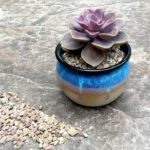
Pea gravel is an excellent choice for succulent top dressing. You can also use pumice, sand, crushed sea shells, fire glass, crushed granite, or crushed coral. Each imparts a very different look while offering the same benefits.
Can you use pumice as top dressing for succulents?
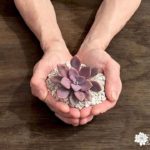
Pumice is a wonderful soil amendment, and it makes an excellent top dressing for succulents. This volcanic rock is available in many sizes, with 1/4″ being the most frequently used for succulents. Pumice is naturally rich in a range of micronutrients that benefit succulents.
It’s Time to Add Succulent Top Dressing!
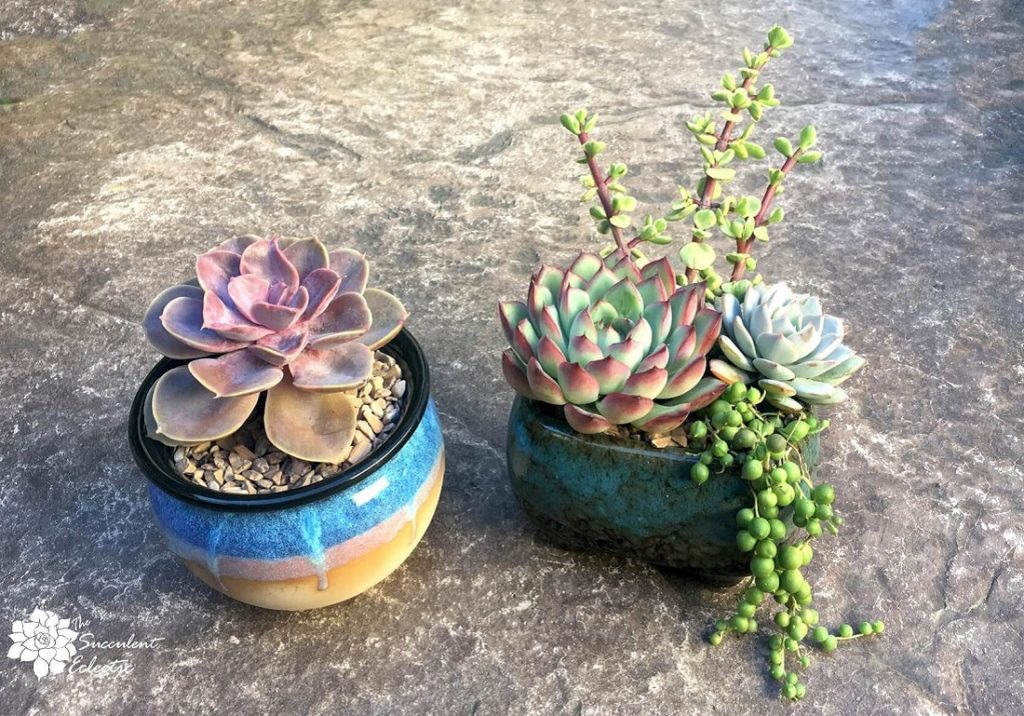
Now that you know all the benefits of succulent top dressing, will you use it? Or do you still have questions? I’d love to know! Please take a moment to leave me a comment and let me know what you think!
Have fun planting your succulents!

P.S. For more information about all things succulent, please subscribe to The Succulent Eclectic. You’ll receive my FREE e-course, 7 Steps to Succulent Success! Thanks!
P.P.S. Why not join my Facebook Group for succulent lovers? We talk about succulent care, propagation, succulent identification, and design. It’s a warm and welcoming group that would love to meet you!
